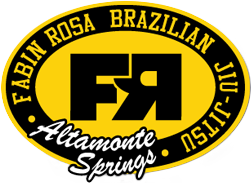Get your free 7-day pass
Mixed Martial Arts And Brazilian Jiu-Jitsu
Modern mixed martial arts did not originate in the United States but rather in the streets of Brazil. Throughout the 1930s, ‘40s, and ’50s, BJJ was developed by the Gracie family. The Gracies learned Japanese JuJitsu and began modifying the art to make it more effective for street fighting. To prove their system was the most effective fighting art, they issued challenge matches to anyone who would fight them “vale tudo” style (no holds barred).
This method of refinement helped Carlos Gracie (the creator of BJJ) determine which techniques were viable in real application with no rules. Because of this, the Gracies are widely considered to be the first MMA instructors in the United States. They practiced MMA before MMA gyms were popular in the South Florida area.
As new competitors challenged the Gracie’s style, the family continued developing their Jiu-Jitsu to maintain its effectiveness against all forms of martial arts. Practitioners of Judo, Kung-Fu, Hapkido, Boxing, Tae Kwon Doe, Karate, Muay Thai, and Wrestling tested their abilities against BJJ, and all matches ended with the same result- victory by submission. In the ’60s and ‘70s, Jiu-Jitsu gained national fame in Brazil as the ultimate fighting art. The Gracies began to incorporate aspects of other MMA styles into their program. They incorporated wrestling takedowns, leg locks from Sambo, and throws and pins from Judo. Their hard work allowed them to compete against any and all MMA competitors they faced.
By the late ‘80s, the Gracie family established MMA classes like BJJ and Muay Thai in the United States. The open challenge for all martial artists to test their abilities against BJJ began to grow in popularity. Eventually, Rorion Gracie saw this as an opportunity to put his challenge matches on television to show the world the effectiveness of his family’s art. Shortly thereafter, he promoted and televised the first-ever Ultimate Fighting Championship. It had almost no rules, there were no time limits, and there were no weight classes.
Rorion invited some of the biggest, most aggressive fighters from many styles- Dutch kickboxers, sumo wrestlers, karate fighters, boxers, and freestyle wrestlers. However, it was his little brother Royce Gracie, a 170-pound BJJ black belt, who dominated every match and forced every other fighter into submission. Royce won the tournament and became the first Ultimate Fighting Champion.
After BJJ burst onto the world scene in UFC 1 on November 12th, 1993, the martial arts culture changed forever. Once Royce Gracie demonstrated the superiority of BJJ as a fighting art, fighters began to realize that grappling was one of the most important aspects of martial arts training. To be well-rounded, they began incorporating BJJ into their daily practice. This gave rise to modern-day MMA. Although today's MMA gym fighters are much more well-rounded than in the early '90s, it is still widely accepted that BJJ is the bedrock of MMA training. Indeed, extensive training in ground fighting, self-defense training, submissions, and submission defense is a fundamental requirement for a successful MMA career.
If you’re looking into MMA gyms in the South Florida area, FRBJJ is the gym for you! Call us or stop by and check out one of our classes taught by our world-class training partners!

